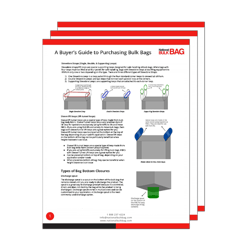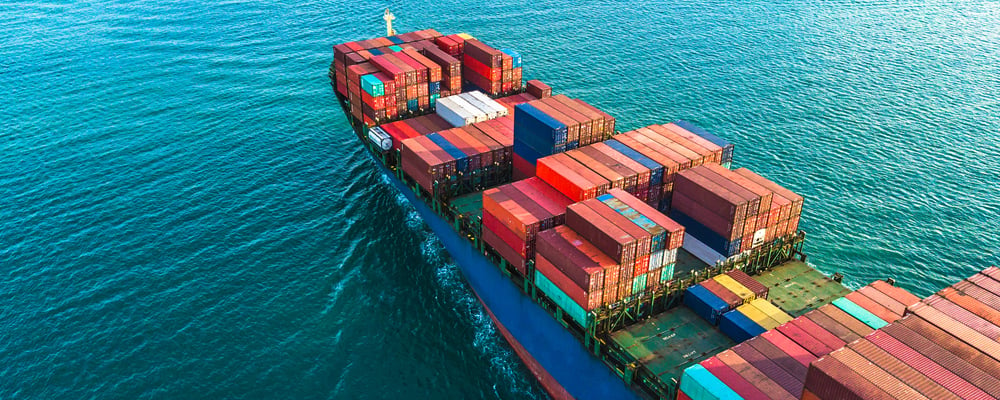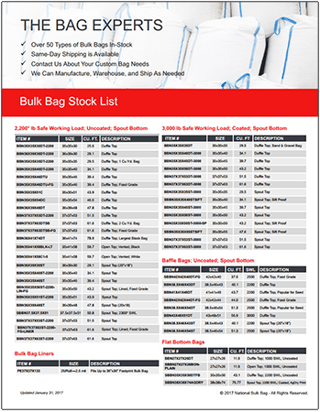During the COVID-19 pandemic, lead times for many goods and raw materials have been significantly extended. Beginning in late 2020 and into early 2021, many manufacturers saw a huge spike in lead times due to skyrocketing demand following the initial lockdown periods across the globe. As the demand increased, supply struggled to keep pace, due often to understaffed manufacturing centers and increased delays in shipping and delivery of raw materials. No industry was immune, including the FIBC bulk bag industry as we covered in our recent post “How the Shipping Crunch Is Impacting FIBC Bulk Bag Lead Times, Prices.”
As the pandemic continues to linger on, the shipping crunch persists, and more and more businesses find themselves facing difficult decisions around how to get their products into the hands of consumers. This has led to some companies taking desperate measures. Let’s explore some of the ways companies have tackled the shipping crunch.
A Quick Recap of the Current Crisis
As mentioned, demand for consumer goods skyrocketed post-lockdown. Coupling the high demand with a fragile supply chain and staffing issues put many manufacturers in a difficult position.
The high demand led to a massive influx of goods shipped from overseas, which quickly overwhelmed ports. Combine port processing issues with a shortage of shipping containers, truck drivers and warehouse space and you a shipping crunch the likes of which have never been seen before.
An Unconventional Response: Private Charters
To mitigate the impact of the shipping crunch, many businesses have turned to desperate or unconventional strategies for moving their goods. One of the trending solutions to the shipping crunch is the use of private charters.
Unlike a standard cargo ship that moves goods for many companies, private charters are just that – privately hired to ship goods for just one organization. Private charters offer significant benefits to companies looking to beat the shipping crunch, including:
- Dedicated schedules: Private charter shipping vessels operate on one client’s dedicated schedule. This means that the client tells the ship when to leave, rather than being forced to wait until the ship is finished onloading cargo from many companies.
- Streamlined routes: Some larger shipping vessels must make several stops along their route to onload goods from multiple ports and clients. In the private tender relationship, routes are much simpler because the only goods being onloaded come from a single client.
- Expanded port options: Private tender shipping vessels are often smaller ships. This opens more port options for unloading. Private tenders can avoid the most congested ports and instead dock at the port of their clients’ choosing.
- Faster unloading: In the conventional shipping process, a client’s containers may be hidden among thousands of others, making them wait through a lengthy unloading before the goods can be moved to their next location. Private tender ships carry less cargo and the client does not have to wait for other containers to be moved before gaining access.
These benefits have more and more organizations exploring the private tender option every day. In fact, some of the world’s largest organizations have employed the tactic, including Costco and Home Depot. If the shipping crunch continues, we expect the popularity of private tenders to increase dramatically for businesses willing to manage the additional costs.
Let Us Help You Mitigate Supply Chain Pressures
While private tenders offer many benefits for businesses looking to move goods more effectively during the shipping crunch, they are expensive. For many businesses within the FIBC bulk bag and packaging industries, the added cost just isn’t feasible. Fortunately, there are other strategies you can employ to mitigate the impact of the shipping crunch, including planning shipments well in advance.
We are here to help you explore all possible strategies to keep your business moving during these trying times. Contact us today to explore your options with one of our experts.
Thanks for reading!
 Thanks for reading our blog post "Common Filling Equipment for FIBC Bulk Bags"!
Thanks for reading our blog post "Common Filling Equipment for FIBC Bulk Bags"!
It's our mission to make your buying experience easy, informative, and enjoyable. We also want to share our knowledge with you so you can make the best purchasing decision for the company you represent. Our Buyer's Guide to Purchasing Bulk Bags includes critical information ranging from types of bags to important safety information about handling and transportation.
Click the button below to download our comprehensive buyer's guide.






